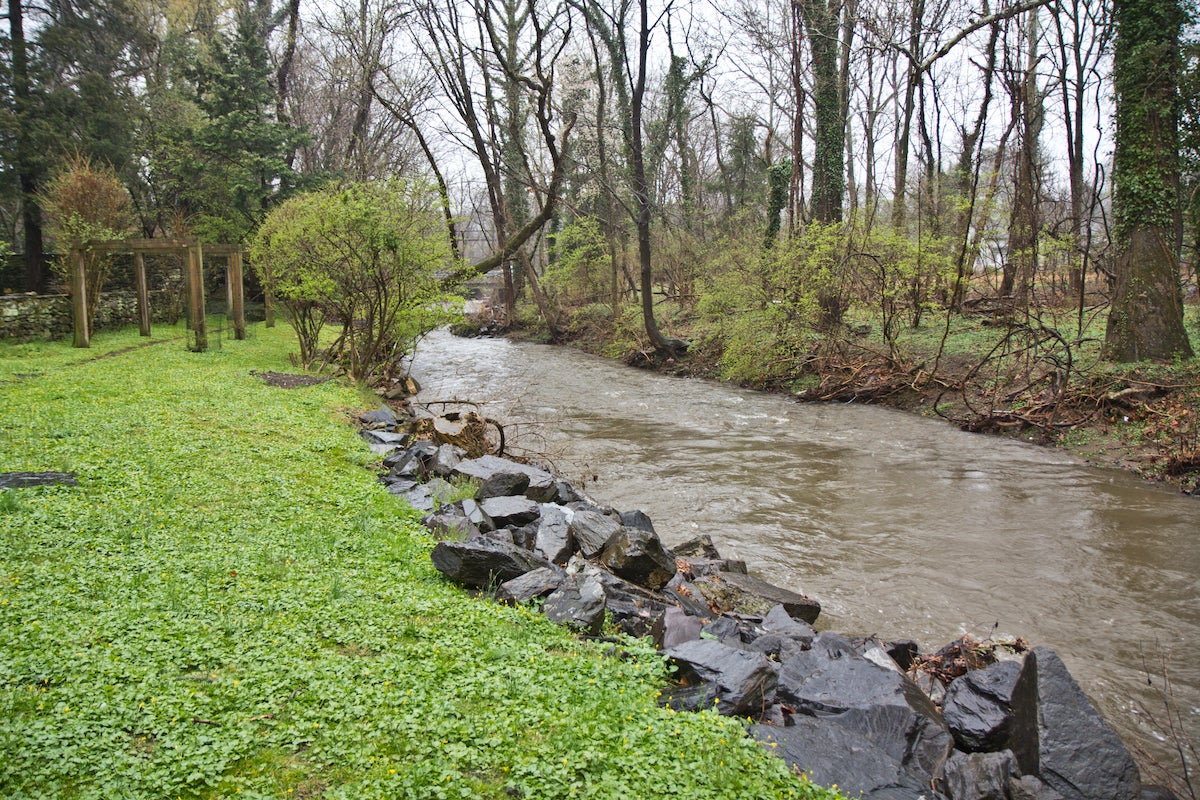Green Building Alliance to Host Resilient Reading Roundtable: Water Conservation Best Practices – Berks Community Television

Report on the “Water Conservation Best Practices” Roundtable Initiative
Event Overview and Strategic Objectives
The Green Building Alliance (GBA), as part of its Resilient Reading initiative, has scheduled a roundtable event titled “Water Conservation Best Practices.” The event is designed to convene sustainability leaders, commercial building owners, and community advocates to address critical water management issues. The primary objective is to explore and promote innovative, solutions-based strategies for reducing water consumption and enhancing the resilience of water infrastructure throughout the Reading area. This initiative directly confronts recent environmental challenges, including prolonged drought conditions, by fostering proactive and efficient water use.
Alignment with Sustainable Development Goals (SDGs)
The roundtable and the broader Resilient Reading initiative are fundamentally aligned with several key United Nations Sustainable Development Goals (SDGs):
- SDG 6: Clean Water and Sanitation: The event’s core focus on water conservation, leak detection, and efficient plumbing directly supports Target 6.4, which aims to substantially increase water-use efficiency across all sectors and ensure sustainable withdrawals of freshwater to address water scarcity.
- SDG 11: Sustainable Cities and Communities: By promoting resilient infrastructure and educating the community on sustainable practices, the initiative contributes to Target 11.3 (enhance inclusive and sustainable urbanization) and Target 11.5 (reduce the adverse effects of water-related disasters like drought).
- SDG 13: Climate Action: The emphasis on building community resilience to climate-related hazards such as drought aligns with Target 13.1, which calls for strengthening resilience and adaptive capacity to climate change.
- SDG 17: Partnerships for the Goals: The event exemplifies a multi-stakeholder partnership by bringing together a non-profit (GBA), a public utility (RAWA), a municipal department (City of Reading Public Works), and the private sector, which is crucial for achieving sustainable development as outlined in Target 17.17.
Key Discussion Areas and Learning Outcomes
The agenda is structured to provide actionable insights and practical knowledge to all attendees. Key discussion points include water conservation techniques, the importance of water leak detection, and business best practices for water management.
Upon conclusion of the event, attendees will have achieved the following learning outcomes:
- Enhanced understanding of municipal water billing and consumption tracking.
- Comprehensive insight into the process of potable water delivery and infrastructure.
- Knowledge of effective strategies and technologies for water conservation in commercial and residential settings.
- A greater awareness of the Green Building Alliance’s work and its contribution to community resilience in Reading.
- Opportunities for networking and collaboration with the Resilient Reading team and local sustainability leaders.
Stakeholder Collaboration and Community Impact
The event underscores a collaborative approach to resource management, featuring prominent speakers from key local institutions.
Featured Speakers:
- Bill Murray, Executive Director, Reading Area Water Authority (RAWA)
- Bethany Ayers Fisher, Sustainability Manager, City of Reading Public Works Department
As stated by Ashley DiGregorio, GBA Senior Director, Energy and Community, the roundtable aims to “educate, inspire, and provide examples of how building for resiliency enables communities to thrive.” This collaborative leadership is vital for implementing smart, forward-thinking practices in plumbing, landscaping, and operations to ensure water is used as efficiently as possible.
Organizational Mission and Initiative Support
The Resilient Reading initiative is an extension of GBA’s overarching mission to foster communities where every person can thrive. Through targeted education, collaboration, and innovation, GBA empowers local leaders to transform the built environment in a manner that addresses climate change, improves human health, and promotes social equity. The Resilient Reading program is supported by the Met-Ed/Penelec Sustainable Energy Fund.
Analysis of SDGs, Targets, and Indicators
1. Which SDGs are addressed or connected to the issues highlighted in the article?
-
SDG 6: Clean Water and Sanitation
The article is centered around the “Water Conservation Best Practices” event. It directly addresses the core themes of SDG 6 by focusing on reducing water waste, promoting efficient water use, and managing water resources, especially in the context of “prolonged drought conditions” experienced in the Reading area.
-
SDG 11: Sustainable Cities and Communities
The “Resilient Reading” initiative aims to make the community more resilient. The article’s focus on “resilient infrastructure” and creating “communities where every person can thrive” aligns with SDG 11’s goal of making cities and human settlements inclusive, safe, resilient, and sustainable.
-
SDG 13: Climate Action
The article explicitly states that the Green Building Alliance’s mission includes addressing “climate change.” The initiative to build resilience in response to “prolonged drought conditions”—a climate-related hazard—directly connects to the need for climate action and adaptation as outlined in SDG 13.
-
SDG 17: Partnerships for the Goals
The event itself is a multi-stakeholder collaboration. It brings together the Green Building Alliance (a non-profit), Reading Area Water Authority (public authority), the City of Reading Public Works Department (public), “commercial building owners” (private sector), and “community advocates” (civil society) to work on a common goal, which is the essence of SDG 17.
2. What specific targets under those SDGs can be identified based on the article’s content?
-
Target 6.4: Increase water-use efficiency and address water scarcity
The article’s primary focus is on exploring “innovative, solutions-based strategies for reducing water waste” and promoting “water conservation.” It mentions specific practices like “efficient plumbing fixtures, landscaping, and operations” and addresses the local issue of “prolonged drought conditions,” which directly relates to increasing water-use efficiency to combat water scarcity.
-
Target 11.5: Reduce the adverse effects of natural disasters
By focusing on building “resilient infrastructure” and helping the community adapt to “prolonged drought conditions,” the initiative aims to lessen the impact of water-related disasters. The goal is to enable the community to “thrive” despite these challenges, which aligns with reducing the effects of such disasters.
-
Target 13.1: Strengthen resilience and adaptive capacity to climate-related hazards
The “Resilient Reading” initiative is a direct example of strengthening local adaptive capacity. The article highlights the need to change practices in response to climate-related hazards like drought, emphasizing a “forward-thinking” approach to building resilience.
-
Target 17.17: Encourage effective public, public-private and civil society partnerships
The roundtable event described in the article is a model of this target. It is a partnership involving the Green Building Alliance (civil society), Reading Area Water Authority and the City of Reading (public), and commercial building owners (private sector) to achieve sustainability goals.
3. Are there any indicators mentioned or implied in the article that can be used to measure progress towards the identified targets?
-
Indicator for Target 6.4 (Implied): Change in water efficiency
The article implies that progress can be measured by the adoption of “efficient plumbing fixtures, landscaping, and operations.” Furthermore, by teaching attendees “how to read their water bill,” it suggests that monitoring and reducing water consumption is a key metric for success.
-
Indicator for Target 11.5 & 13.1 (Implied): Implementation of local disaster risk reduction and climate adaptation strategies
The “Resilient Reading” initiative itself serves as an indicator. The implementation and expansion of such initiatives and the “resilient infrastructure” projects they promote would be a measure of progress in strengthening community resilience to climate-related disasters like droughts.
-
Indicator for Target 17.17 (Implied): Number of multi-stakeholder partnerships for sustainable development
The event itself is an indicator of a functioning partnership. The number of attendees from different sectors (public, private, civil society) and the collaborative projects that emerge from such roundtables could be used to measure the success of building partnerships for the goals.
4. SDGs, Targets and Indicators Table
| SDGs | Targets | Indicators (Mentioned or Implied) |
|---|---|---|
| SDG 6: Clean Water and Sanitation | Target 6.4: By 2030, substantially increase water-use efficiency across all sectors and ensure sustainable withdrawals and supply of freshwater to address water scarcity. | Implied: Adoption of efficient practices (efficient plumbing, landscaping); Reduction in water consumption as monitored through water bills. |
| SDG 11: Sustainable Cities and Communities | Target 11.5: By 2030, significantly reduce the number of people affected and decrease the direct economic losses caused by disasters, including water-related disasters. | Implied: Number of “resilient infrastructure” projects implemented to mitigate the effects of drought. |
| SDG 13: Climate Action | Target 13.1: Strengthen resilience and adaptive capacity to climate-related hazards and natural disasters in all countries. | Implied: Existence and implementation of local adaptation strategies like the “Resilient Reading” initiative. |
| SDG 17: Partnerships for the Goals | Target 17.17: Encourage and promote effective public, public-private and civil society partnerships. | Implied: Number of multi-stakeholder partnerships formed, such as the roundtable event involving public, private, and civil society actors. |
Source: bctv.org

What is Your Reaction?
 Like
0
Like
0
 Dislike
0
Dislike
0
 Love
0
Love
0
 Funny
0
Funny
0
 Angry
0
Angry
0
 Sad
0
Sad
0
 Wow
0
Wow
0












































































